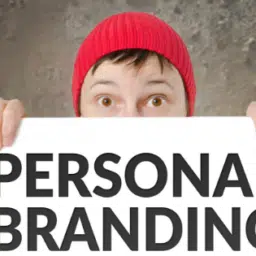If you work in front of a screen all day long and then pick up your smartphone constantly when you’re away from your desk like I do, you might want to pay attention here.
There’s a new health concern in town, and its name is blue light. It flickers in your fluorescent and LED lights in your home, it is emitted from your digital television screen, you’re exposing your eyes to it every time you check Facebook on your phone, and it’s bombarding your eyes all day at work while you stare at your computer.
It’s not exactly new, but you’re getting more exposure to it than previous generations did, and although you might not know it yet, it’s starting to wreak havoc on your eyes and your overall health.
What is blue light?
In the visible light spectrum, blue light makes up a third of visible light. Its wavelengths are shorter than any other color in the visible light spectrum, emitting higher energy levels than any other color your eyes can perceive.
This combination has been discovered to cause a whole litany of problems with high exposure.
Why are we getting more blue light?
Even in just the last few years, the number of hours the average American spends looking at digital screens has increased dramatically. In 2014 the average person spent 7.4 hours a day looking at digital screens, which rose to 9.65 hours in 2015 and finally to 10.65 hours in 2016. Those figures are likely to continue to increase as our computers and smartphones become a more integral part of our lives.
Even the energy-efficient lighting we are putting in our homes to reduce our carbon footprint is emitting a high level of blue light, and the flickering is leading to fatigue in our eyes.
What is blue light doing to us?
When all those high energy light waves hit your eyes, a few different things happen. First, UV light is absorbed by the lens of your eye, which can cause cumulative damage over time like cataracts.
Blue light can penetrate the macular pigment over time and harm the retina, leading to macular degeneration. In fact, there was a 25% increase in late-stage macular degeneration between 2000 and 2012.
Exposure to UV light can also lead to pterygium, a tissue growth on the cornea. And these are just a few of the serious medical problems that can arise from too much exposure to high- energy light.
Most people are still looking at their screens as they lie in bed waiting to fall asleep. (Come on, you know you do it too.) But those light waves tell our brains that it’s time to be awake and happy and alert instead of time to wind down and get some shuteye. The result is insomnia and other sleep disruptions, which we all know can lead to a whole host of other problems in the long run.
Flickering lights can cause eye fatigue. Blue light exposure can cause headaches and eye problems. Too much screen time can cause blurred vision, stiff necks and shoulders, computer vision syndrome, and dry eyes. Over time the cumulative effects can be very damaging to your health.
High-tech and low-tech solutions can help.
First and foremost, stop looking at screens within an hour of going to bed. This will allow your eyes to rest and your brain to start winding down from your day. Employ the 20-20-20 rule, where you stop looking at screens for 20 seconds every 20 minutes and focus your eyes at least 20 feet away.
Put a Post-it note on your screen reminding you to blink. Reduce glare by adjusting your screen, and make sure your screen brightness is at the same level as your surroundings. These are very low-tech ways to combat computer vision syndrome and other issues from too much blue light exposure.
There are devices and apps now that have blue-light-blocking settings. Use these settings as much as possible, especially when it is getting close to bedtime. There are even some physical blue-light-blocking screens you can retrofit over your computer screen if your computer doesn’t have these settings. If you regularly wear glasses, consider getting UV and blue-light-blocking coatings to protect your eyes.
Even if you don’t wear glasses, it’s worth considering getting special computer glasses to protect your eyes so you can prevent as much cumulative exposure to these harmful light waves as possible.
Establish good habits early. Walk back bad ones ASAP.
Almost 80% of parents report that their kids get more than two hours of screen time a day, which is far more than they should be getting. Establishing positive habits with screens early on can mitigate some of these problems.
Even adults can work on walking back some of their bad habits like checking your phone right before you go to bed. Learn more about the adverse side effects of too much blue light exposure from this infographic from Frames Direct.
Are you ready to take better care of your eyes?

To talk about how AkkenCloud can help transform the way you do business, click here!





What i don’t understood is in fact how you are no longer really a lot more neatly-preferred
than you may be now. You are so intelligent. You understand therefore significantly in relation to this subject, made me personally
consider it from numerous varied angles. Its like women and men aren’t involved unless it’s something to do with Woman gaga!
Your individual stuffs nice. At all times take care
of it up!